Bikan historic district - A feel of ancient Japan in Kurashiki
Read this post on TravelFeed.io for the best experience
.png)
The first thing we saw in Kurashiki was a long pedestrian bridge leading to a huge sign advertising a pachinko parlor. The second was a karaoke booth. Based on the surroundings of its train station, Kurashiki didn’t look much different from any other city in Japan. Yet, we knew there was something special about this town south of Okayama and it didn’t take us long to find out what exactly. In truth, all it took was to follow a group of girls wearing traditional kimono with a colorful flowery pattern as chances were high we were going to the same place.
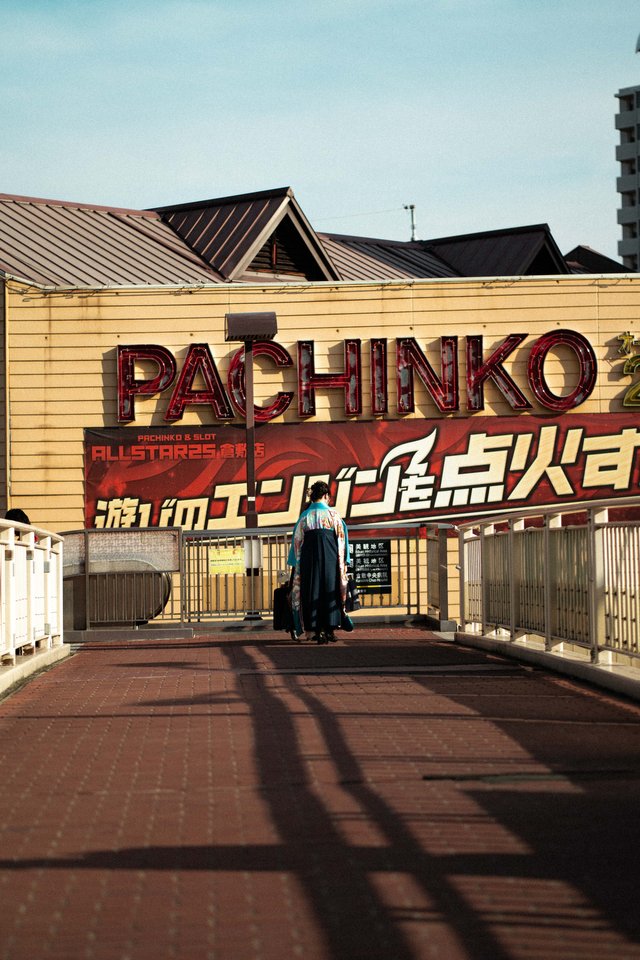
We followed them from a distance along a broad avenue, until a sign with the word Bikan showed us we were going in the right direction. As soon as we left the avenue and walked into a side-street on our left, the landscape changed dramatically. Concrete buildings were gone, replaced by one-story white traditional houses in perfect alignment. Traffic had stopped too and the street seemed to belong to pedestrians and the occasional bikes. We had very clearly entered the historic quarter of Kurashiki, the infamous Bikan.

An old merchant district, Bikan was said to be one of the most picturesque of its kind throughout Japan. It was also one of the best-preserved, boasting an impressive array of ancient wooden white-walled storehouses known as kominka, some dating back 300 years. It was no coincidence for Kurashiki to mean “the town of storehouses”. Thriving during the Edo period stretching from 1603 to 1868, it had then become a place of major European cultural influence following the Meiji Restoration of 1868, welcoming the first private museum of Western art in the country. The blend of architectural styles and influences was plain to see
as we arrived in front of the Ohara Museum of Art, so striking was the contrast between what looked like an ancient Greek temple with a modern twist and the wooden houses with their noren curtains hanging in front of the door.
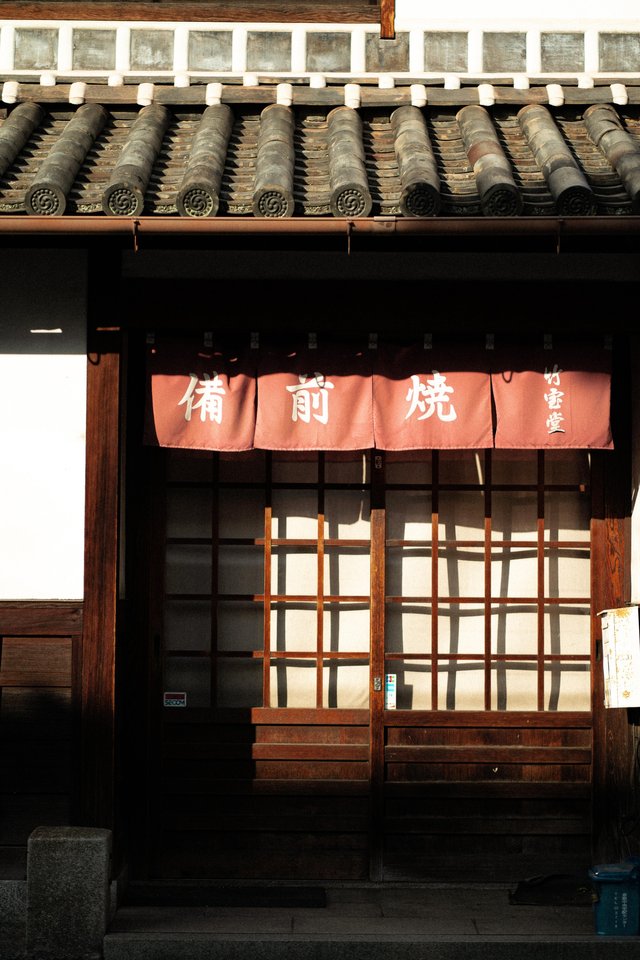
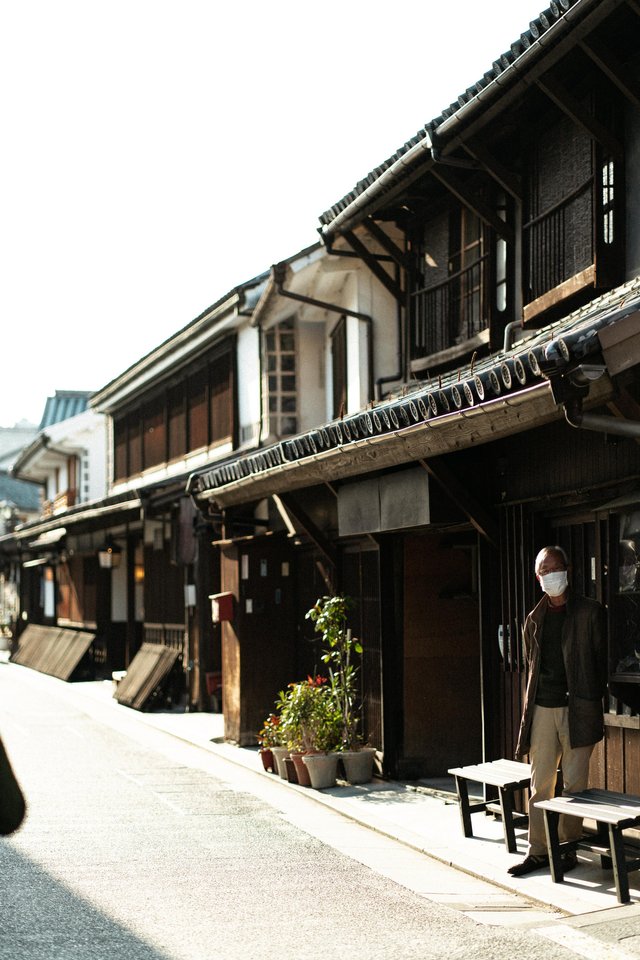
By the mid-afternoon, the museum was already closed but we hadn’t flown all the way from France to see Western paintings in Japan anyway. We had come to Kurashiki to enjoy the
historic atmosphere of its quiet streets and that was exactly what we were getting. Lined up with perfectly preserved buildings, the streets of Bikan reminded us of the historical areas of Kyoto, only with half as many visitors. Of course, it was still obvious we were strolling in the streets of a touristy area, if only because of the sheer amount of traditional kominka houses turned into cafés and souvenir shops. Yet, there was some kind of peacefulness all around, a
serene atmosphere that made up for the lack of actual spots to visit at this time of the day.
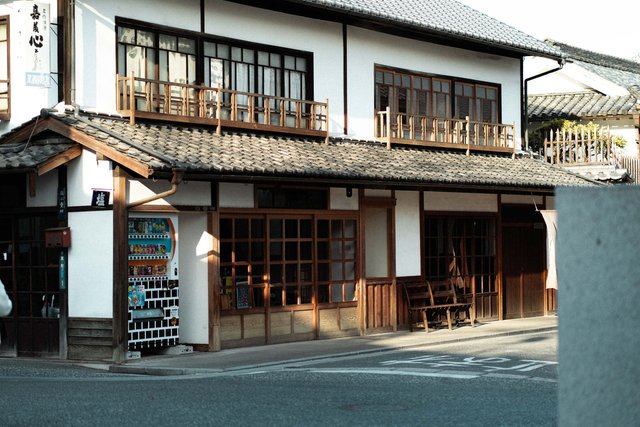
The mood wasn’t as laid-back when we finally got near the Kurashiki canal. It seemed to be the place of choice for groups of peppy college girls wearing kimonos, masked teenage boys and young couples, all on the look-out for the ultimate selfie spot. With its weeping willows, its blossoming cherry trees and its traditional boats floating under stone bridges, the canal area was a scenic place for sure. On all sides white-walled houses blended with Western-style buildings, such as the town’s tourist information office, built in 1917 as a city hall.

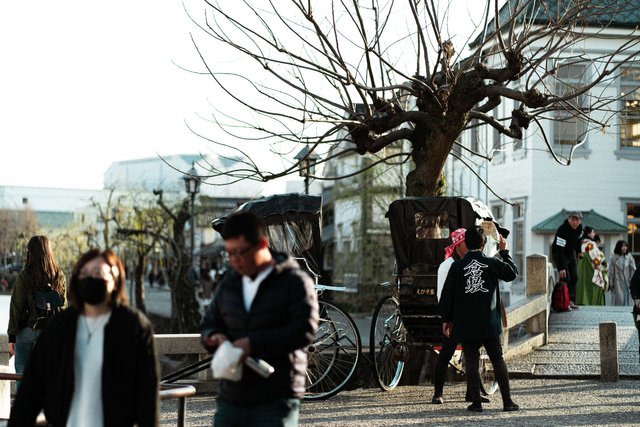
Taking pictures of the area from all angles and sitting on the side of the canal to soak in the atmosphere made us miss the window to get on a boat ride. Judging from what we had seen, the ride did not last very long and we could see as much by walking near the canal than by cruising it so we turned away without any regret.
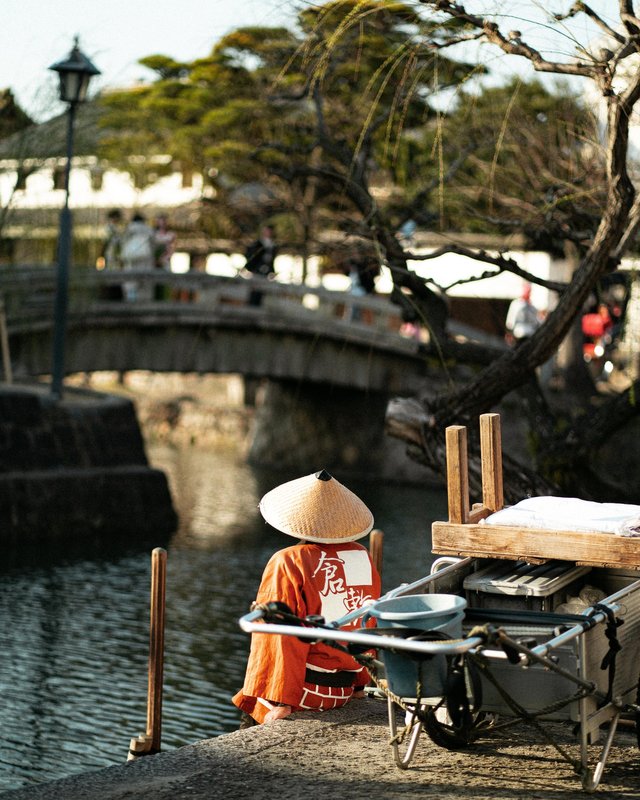

As we wandered aimlessly in the streets, a flight of stairs in the distance caught our attention, promising some interesting views above the town along the way. We walked past a temple or two and a cemetery before deciding to follow a pathway on our right, which eventually led to a wooden gate on top of another flight of stairs. Crossing the gate, we discovered the shrine of Achi.
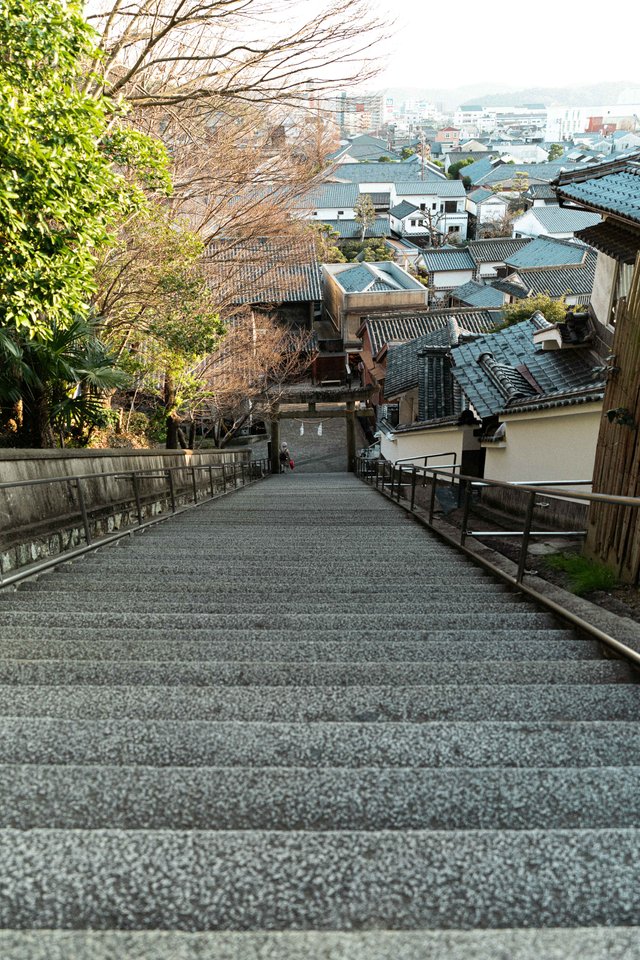
There was nothing impressive about this shrine, save perhaps for the unusual number of daruma dolls in one of its buildings. It was a local, tranquil shrine on top of the Tsurugata-yama hill. Yet, we lingered longer than expected. Maybe it was the beauty of the fading lights of the early evening that made us stay or maybe the curiosity to stop and read the wishes written on wooden plaques hanging all over the shrine, most of which had something to do with succeeding at exams or making it to university.
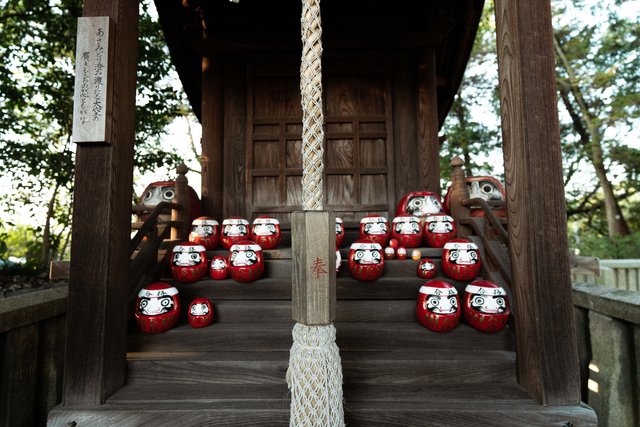
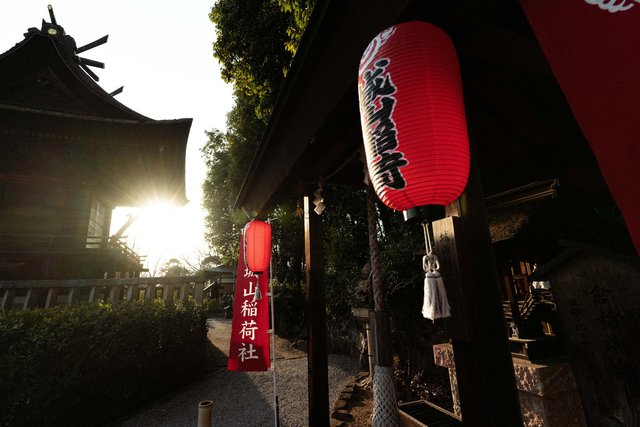
When we walked down the long stairs going back to the Bikan, the sun was low in the sky
and we decided to get a quick bite before nightfall. Kurashiki was known for a specialty called demikatsu and the sound of fried pork cutlet topped with demi-glace sauce sounded appealing enough to walk to the other side of the district to the Kappa restaurant, aka the best demikatsu in town according to the Internet. Locals seemed to agree and we had to wait in line for fifteen minutes. A waiter had come to take our order as soon as we had arrived though and we were munching on a juicy piece of thickly sliced pork at the counter in no time.

The streets were dark and empty when we got out. We walked towards the Kurashiki canal once again, enjoying the beautifully lit up storage houses along the way. Even at night time, we weren’t the only tourists taking a stroll along the canal but the mood was far quieter than before. The boats were docked and only a handful of white swans were cruising the canal, sharing the space with some kai carps. Rickshaw drivers were nowhere to be seen. Cafés and shops had shut their front doors. As we sat there in silence, we noticed for the first time that there were no electric wires hanging above our heads just like in every other Japanese city. There was definitely something special about Kurashiki.
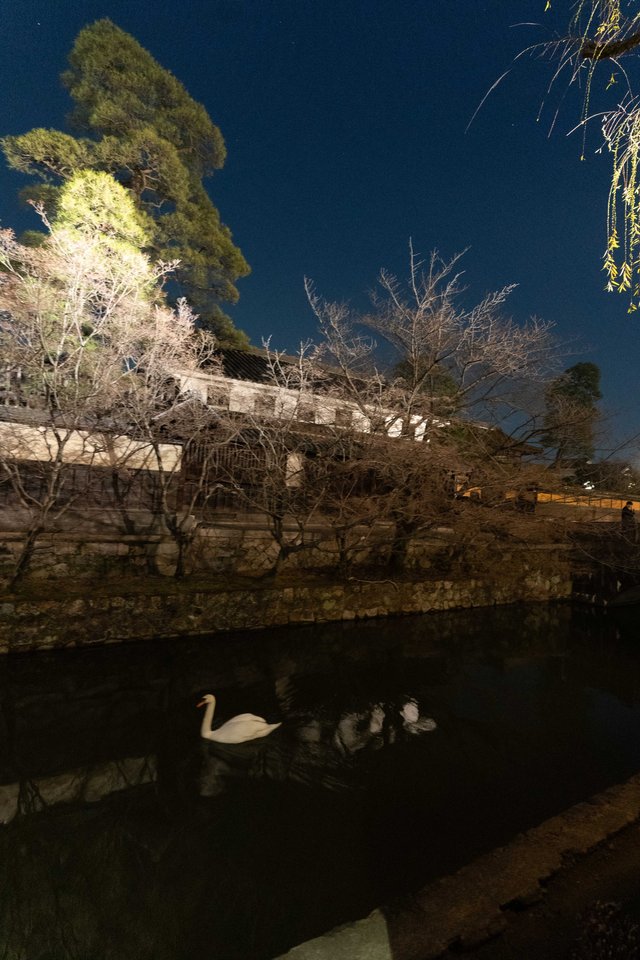
Congratulations @haydae! You received the biggest smile and some love from TravelFeed! Keep up the amazing blog. 😍 Your post was also chosen as top pick of the day and is now featured on the TravelFeed.io front page.
Thanks for using TravelFeed!
@invisusmundi (TravelFeed team)
PS: You can now search for your travels on-the-go with our Android App. Download it on Google Play